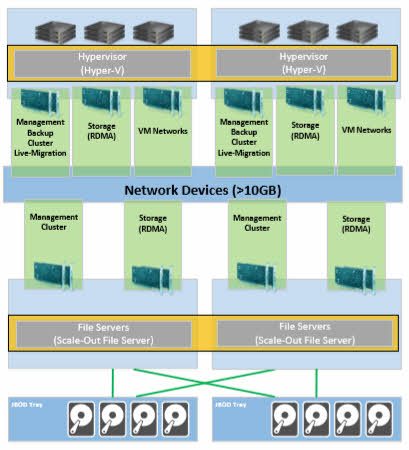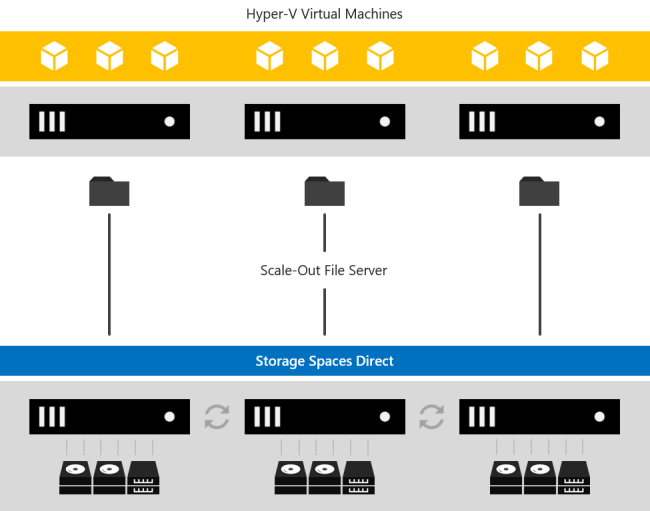What Is Hyper-Convergence in Windows Server 2016?
In this Ask the Admin, I’ll explain what hyper-convergence is and how it can help simplify your IT systems.
There’s a new buzzword in Microsoft’s recent literature – hyper-convergence. Microsoft is improving Storage Spaces Direct in Windows Server as part of its hyper-convergence efforts to lower costs and reduce complexity in its Azure cloud platform. But understanding hyper-convergence requires some background knowledge first.
Virtualization and high availability clusters have long been key technologies in the datacenter. Clusters need access to shared storage, which is typically provided by a storage area network (SAN). Not only are SANs expensive, but they also require expertise to set up and keep them running. SANs fall into the category of dedicated hardware and servers also need special hardware to connect to them. So, if you don’t know your LUNs from your Fibre Channel (FC) over Ethernet (FCoE), or your SFP modules from your HBAs, then a SAN will present a real technical challenge.
One reason virtualization gained popularity was that it is software based and is more flexible than physical hardware. Because clusters are required for high availability, adding a SAN to the equation negated some of the benefits provided by virtualization in the first place. The software-defined datacenter aims to bring the flexibility of software but retain the benefits of hardware solutions. Hypervisors and software-defined networking are already baked into Windows Server 2016. If you are not familiar with software-defined networking (SDN), it allows you to use network virtualization instead of VLANs that require physical switching equipment. For a brief overview of SDN in Windows Server 2016, see What Is Software Defined Networking In Windows Server 2016? on Petri.

Server Storage Spaces
Windows Server Storage Spaces is software-defined storage. Or in other words, it is storage virtualization for Windows Server. Storage Spaces uses thin provisioning, storage can be dynamically added to RAID arrays or Just a Bunch of Disks (JBOD) and used as shared storage for Hyper-V clusters or SMB 3.0 Scale-Out File Servers (SOFS). For more detailed information on Storage Spaces, see Windows Server 2012: Is Storage Spaces the Killer Feature? on Petri.
A Windows Server SOFS can replace a SAN and it is a popular way to provide high availability shared storage. Because the storage is shared, adding clusters reduces the available input/output per second (IOPS). Hyper-convergence aims to solve that problem by using local direct attached storage instead of a SOFS. Windows Server Storage Spaces Direct uses direct attached storage to create highly-available and scalable software-defined storage.

In Microsoft’s hyper-converged solution, a minimum of two identical nodes is required in each cluster. Each node has its own storage, which can be either JBOD connected using Serial Attached SCSI (SAS), Serial ATA, or Non-Volatile Memory Express (NVMe). The hyper-converged model combines compute and storage in one cluster and is ideal for small and medium businesses as it reduces complexity and hardware costs. Larger organizations can build a SOFS on top of Storage Spaces Direct to separate storage and compute. This allows organizations to scale compute and storage separately.

Hyper-convergence will help Microsoft deliver private cloud solutions, including Azure Stack, to smaller organizations. If you’d like more technical details on Storage Spaces Direct, Microsoft has a great 5-minute video available here on YouTube.




